Slipping Into Shape
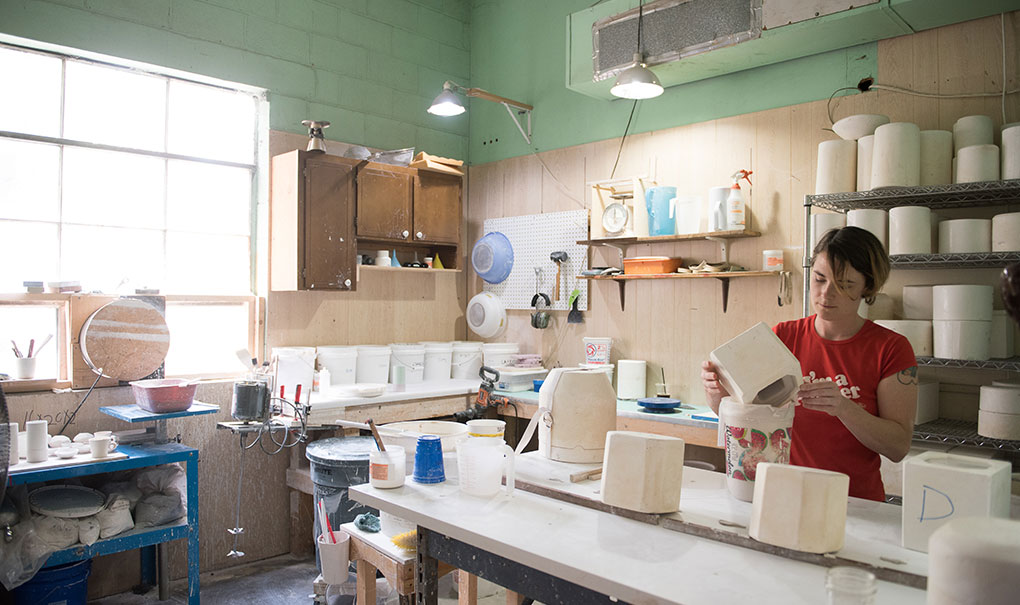
For years, professional potter Anderson Bailey was faithful to the ancient emblem of his craft: the potter’s wheel.
“I was making pottery full time, on the wheel, but was having a hell of time getting by,” Bailey says.
Watching a potter throw is an experience in instant artistic gratification: in a matter of seconds, a solid lump of wet clay becomes fluid, and then suddenly, it’s a piece of functional art that’s wholly unique. For the bystander, it’s hypnotic — the soft whir and rhythmic kicking, the ever-shapeshifting clay, the unbroken concentration of an artist at work.
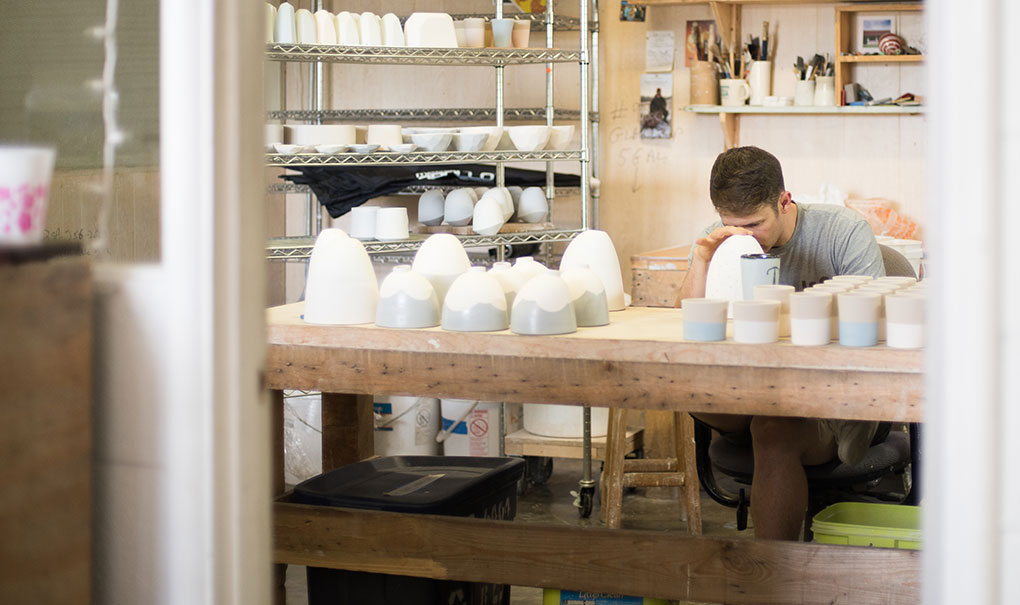
But for the potter, the wheel can be restrictive. As Anderson knows all too well, it’s not a good way to mass produce, and it’s limiting in terms of design because thrown pieces are always radially symmetrical. So his wife and fellow artist, Jessie Bean, suggested they look into slip casting, a different method that led to a new kind of work and ultimately, a new business.
Slip casting employs molds to shape clay. It’s ideal for crafting asymmetrical, “out-of-round” pieces, and the molds facilitate replication — so once perfected, the same piece can be made over and over again. As Anderson and Jessie mastered the process together, they decided to make their passion an official partnership and founded Bean & Bailey Ceramics.
“The rubber really hit the road when we applied for a ‘MakeWork’ grant through the now-dissolved local nonprofit CreateHere,” Anderson says. “It made the whole endeavor possible. We used the money to learn the process and develop a body of work, then put it on the market.”
Anderson and Jessie wasted no time producing a dynamic variety of functional, replicable pieces: cups and mugs, bowls and vases, colored in warm whites or cool pastels or charcoal grays. Some are angular and multifaceted, others are organic curves, like river rocks smoothed over by a current.
“We have this one cup that’s subtly out-of-round,” says Anderson. “That piece has surprisingly become one of my favorites. Finding the right nook in my hand in which that soft edge fits continues to be enjoyable.”
A good piece of pottery — one that places equally high value on beauty and function — can quickly become irreplaceable in the eyes of its owner. No one knows this better than Anderson and Jessie, which is why they’re sometimes tempted to keep their work for themselves.
“Every once in a while, I take a cup or bowl home that I think is extra special,” says Jessie. “But when I get home and see how many we have on our shelf, I feel like maybe I should just let it go out into the world. With the one-of-a-kind things we sometimes make, it’s definitely harder to let go of them.”
Of course, it’s easier to say goodbye knowing that their work will be well used and well loved — and that they’ll get a glimpse of it from time to time.
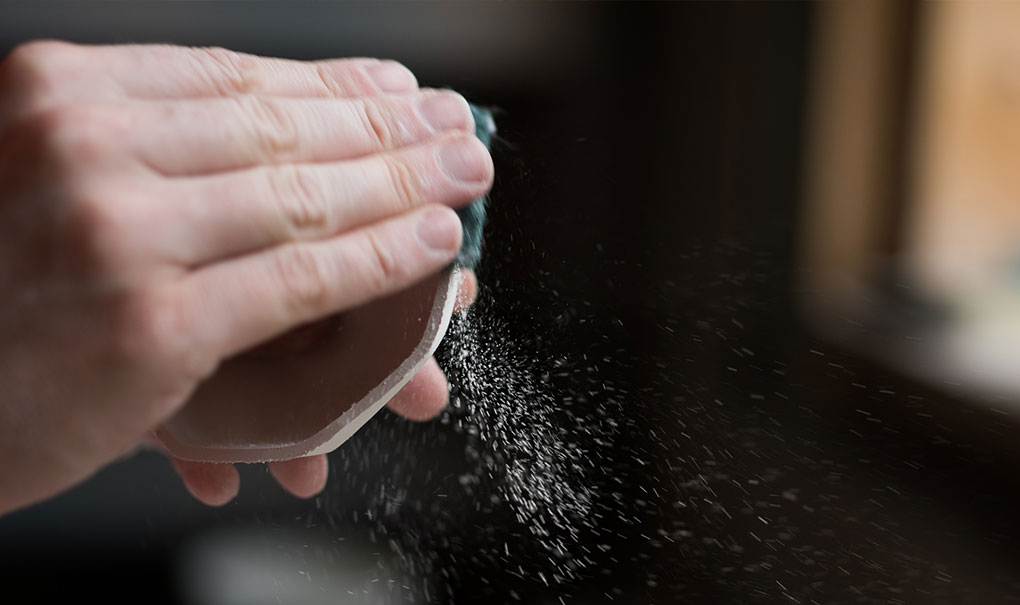
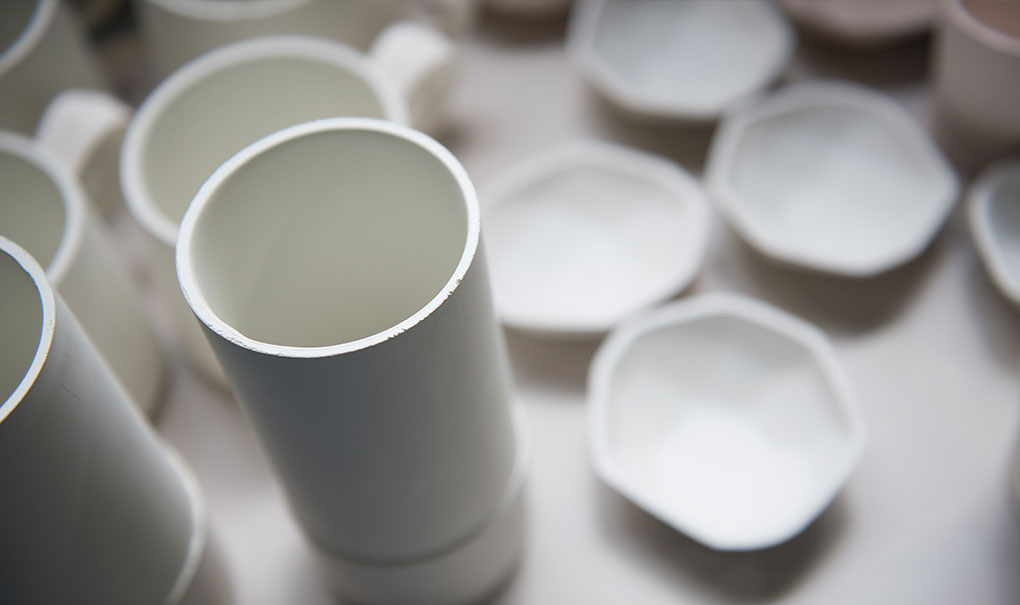
“Occasionally, someone out there will Instagram a picture of one of our pieces in their home,” Jessie says. “That always excites me, knowing we made that piece and now it’s out there having a good time.”
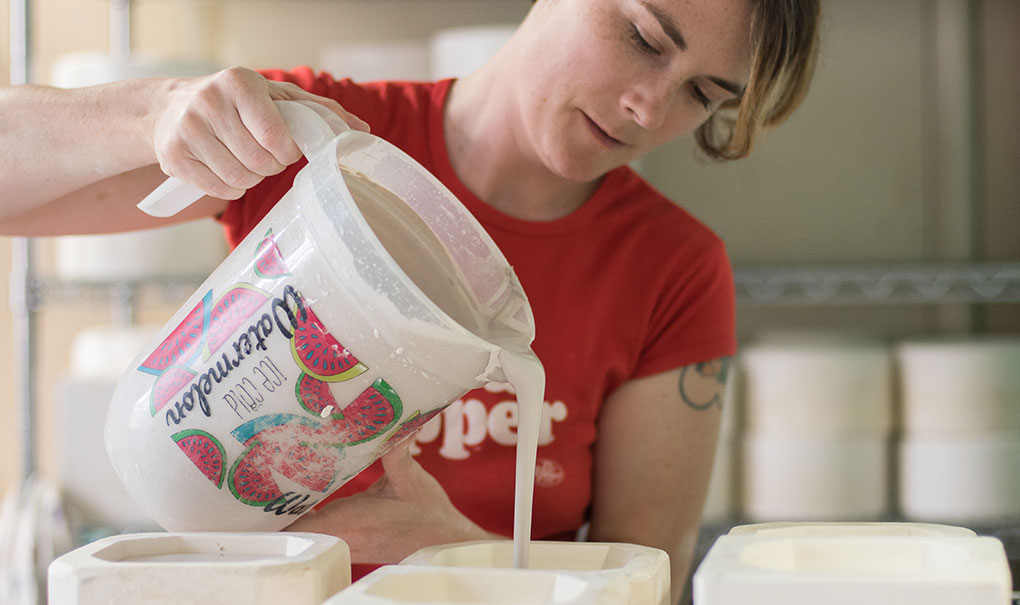
It’s more than simple gratification, though. Every business venture is a risk, so Anderson and Jessie find validity in the photos and feedback they receive in person and online, from customers near and far.
“We especially like hearing that something we’ve made is a part of a daily ritual — like, ‘I use that mug every single morning,’ or ‘every time we watch a movie I eat ice cream out of that bowl,’” Anderson says. “It’s a rewarding experience that justifies our decision to make this work.”
Not that justification is required. Anderson and Jessie have cultivated a loyal customer base in a relatively short amount of time. But like other artists, their hometown has been a harder market to crack. While their story was made possible thanks to a very local push to support Chattanooga artists, Bean & Bailey finds the vast majority of its customers outside of the city, focusing primarily on wholesale to shops across the country, and a few abroad.
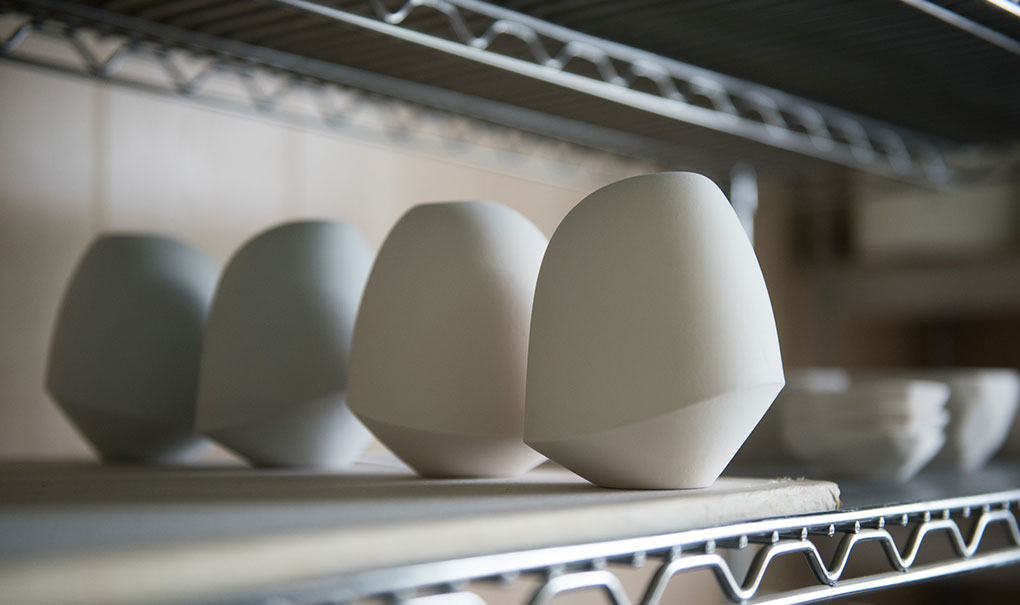

“We find more success in metropolitan cities,” Anderson says. “There is a lot of potential to expose tourists to quality work made by Chattanooga artists — I just don’t think the right person or group has tried to make the connection yet.”
“Our work is very accessible and very useful. It could bridge the gap between artists and people who don’t yet appreciate art or don’t want to spend a lot of money on it,” Anderson says. “I believe as we put more effort into it, we’ll find a larger marketplace here. We’re poised for success.”
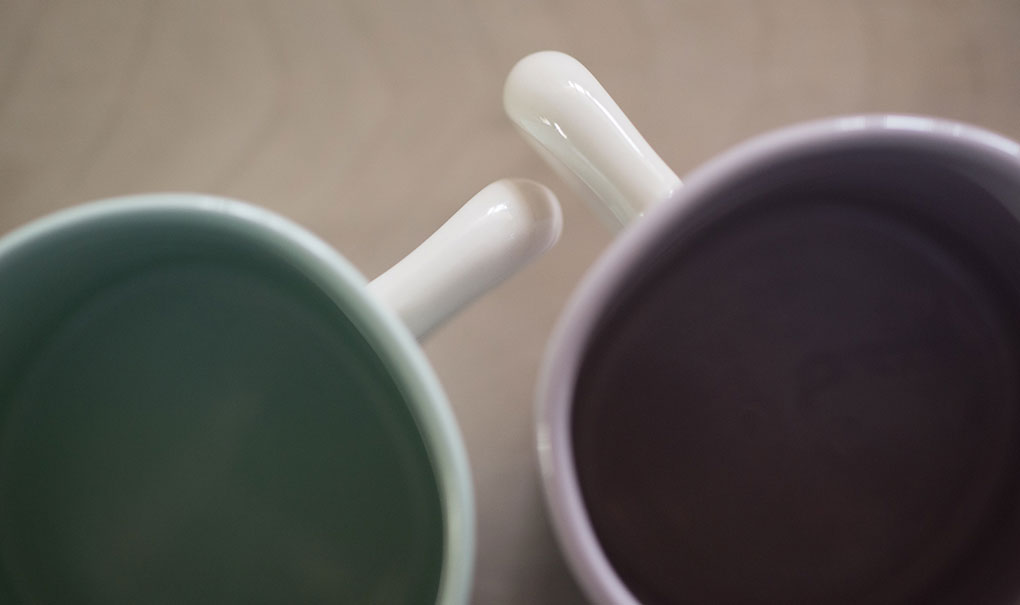

It’s more than simple gratification, though. Every business venture is a risk, so Anderson and Jessie find validity in the photos and feedback they receive in person and online, from customers near and far.
“We especially like hearing that something we’ve made is a part of a daily ritual — like, ‘I use that mug every single morning,’ or ‘every time we watch a movie I eat ice cream out of that bowl,’” Anderson says. “It’s a rewarding experience that justifies our decision to make this work.”
Not that justification is required. Anderson and Jessie have cultivated a loyal customer base in a relatively short amount of time. But like other artists, their hometown has been a harder market to crack. While their story was made possible thanks to a very local push to support Chattanooga artists, Bean & Bailey finds the vast majority of its customers outside of the city, focusing primarily on wholesale to shops across the country, and a few abroad.


“We find more success in metropolitan cities,” Anderson says. “There is a lot of potential to expose tourists to quality work made by Chattanooga artists — I just don’t think the right person or group has tried to make the connection yet.”
“Our work is very accessible and very useful. It could bridge the gap between artists and people who don’t yet appreciate art or don’t want to spend a lot of money on it,” Anderson says. “I believe as we put more effort into it, we’ll find a larger marketplace here. We’re poised for success.”
